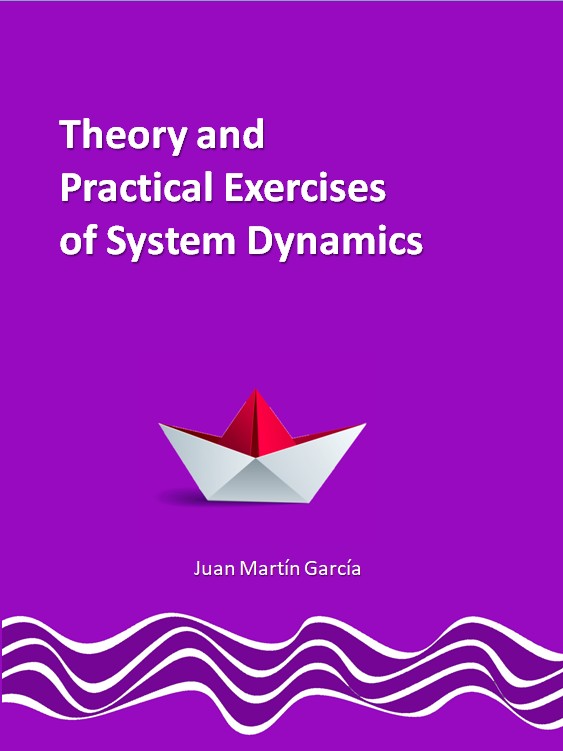Content
Paper 1. Basic Logistic Model
System dynamics approach is a method used to understand how the system changes over time. In this paper a logistic system was modeled using System dynamics. This model includes two stocks and three flows. Developed system dynamic model provides to analyze the values of product stock, order in transit and received order.
Paper 2. Variability of Demand and Bullwhip Effect
This paper offers a dipper insight into the processes in a logistics chain, measuring the inventory cost consequences due to variability demand amplification. Traditional model of dynamic supply chain structures is used for this particular study, and a simulation platform for supply chain management at stochastic demand.
Paper 3. Effectiveness of Lean Manufacturing
In this paper Lean manufacturing is linked with technology by causal relationships. The notable advantage of the model is the ability to alter a parameter to find how it affects others parameters by considering key results. The results of such analysis could somewhat improve the efficiency of technology improvement on Lean manufacturing.
Paper 4. Life Cycle of Computers
The paper present the development, verification and validation of models of computational simulation for assessment of environmental and financial impacts caused by the extension of the life cycle of personal computers (PC) through their remanufacturing. Results generated by the simulation model, show that the remanufacturing is a viable alternative.
Paper 5. Influence of 3D Printing
In the future, part of global manufacturing may change from centralized to distributed due to 3D printing. This paper evaluate this impact, it shows that the total demand of international transport would decline after the application of 3D printing. For consumer country, the return of manufacturing would increase its container business.
Paper 6. Forecasting Retail Electricity Market
In this paper, a market share forecasting model was established based on Markov chain, and a system dynamics model was constructed to forecast the electricity consumption based on the analysis of five factors which are economic development, policy factors, environmental factors, power energy substitution, and power grid development.
Paper 7. Machine Learning Simulation
While System Dynamics can be used with great success to analysis systems, this paper focusses on using them to find optimal policies. To this end, an optimization framework is described, which relies on Reinforcement Learning, a machine learning regime. The paper discusses why the chosen algorithm is appropriate and gives an extension in the form of a meta-algorithm to increase performance.
Paper 8. Improving the Productivity
This paper shows a simulation that was conducted using systems dynamics, coupled with certain processes that were improved by employing lean techniques and the theory of constraints (TOC), and the simplified drum– buffer–rope model (S-DBR) to reduce processing time and improve the productivity of the quality control processes of enameled wire coils.
Paper 9. Increasing Port Security and Performance
The paper shows models of port performance on two relevant time scales. A short-term port operations model simulates the effects of a variety of security measures on port operations, and a long-term port economics model simulates the possible consequences in of port performance changes on the long-term competitiveness of the port.
Paper 10. A Work Accident Simulation
The risk prevention system of a generic company is described using a simulation model to simulate the effects that occur after a serious emergency exercise. This study analyzes the complexity of the relationships between the parts of the system that can lead to accidents and simulates various strategies that reduce risk.
Paper 11. Behavior of Procurement Process
This paper shows the use of system dynamics methodology in studying the behavior of procurement process, that is totally different from other fields more usually studied with system dynamics like supply chain, project management and company performance.
Paper 12. Impact of New Technologies on Employment
It is known there are two opposite positions in the academic world; the Tecno-Optimists and the Tecno-Pessimists, and this paper studies the effects of new technologies on employment, with priority AI with or without robots and/or drones; 3D/4D printing and Nanotechnology as the most important; followed by IoT; Autonomous driving; Blockchain; and Augmented reality.
Paper 13. Knowledge Management in Small and Medium Enterprises
This paper shows that the knowledge can be modeled, that several scenarios are obtained using a computer model, and as conclusion it is clear that the knowledge management has an important impact on the production supply chain in agro-food industry, which is defined by unestructured problems that can be managed using System Dynamics models.
Paper 14. Modeling the Intensive Farming Production
This work integrates in a single model the themes of production and the economic aspects, which is usual, but also includes in the model the social and environmental impacts of its activity, and this is an interesting novelty. All these aspects interact with each other to offer a vision of the company's sustainability, to face the changes that must be analyzed.
Paper 15. Scenario Planning Workshop
The paper show a practical experience and discuss key implementation challenges of a systems approach that combines System Dynamics, Scenario Planning and Qualitative Data Analysis in tackling a complex problem, showing the difficulties encountered in designing and planning the Scenario Planning workshop.
Paper 16. Environmental Issues in Mining Activities
The focus of this paper is on social and environmental issues in mining activities, by both industry and policy. Different methodologies were explored, starting from a qualitative causal loop modelling. The main findings related to the importance of the supply chain, the vulnerability of local communities, and the toxic emissions.
Paper 17. Enterprise Resource Planning Implementation
This study developed a system dynamics model of Enterprise Resource Planning ERP implementation based on Critical Success Factors CSFs to discuss ERP implementation complexities, which identifies the effect of CSF interrelations on different aspects of ERP project failure.
Paper 18. Business Dynamics Simulator
This study develop a business simulation environment to help evaluate future businesses performance using system dynamics approach for entrepreneurship. Students see the simulation of their future businesses useful to check if the business will be profitable and cash breakeven.







